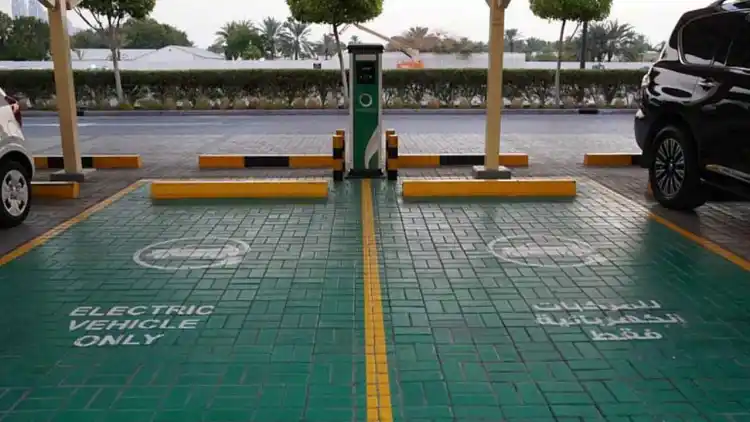- How to Get a Monthly Installment for Used Cars Without a Bank Loan in UAE
- What Are the Alternative Financing Options?
- Steps to Buy a Used Car with Installments Without Bank Loans
- Things to Consider When Choosing Non-Bank Financing
- Benefits of Opting for Non-Bank Financing
- FAQ
Purchasing a used car on a monthly installment plan without relying on a bank can seem challenging, but used cars for sale monthly installment in uae without bank make it possible. With many dealerships and flexible financing, this guide shows you how to buy smart and within budget.

How to Get a Monthly Installment for Used Cars Without a Bank Loan in UAE
For buyers who want to avoid traditional banking systems, there are several straightforward options to explore. Many alternative financing options are designed to provide convenient payment solutions without compromising financial security.
Follow These Steps to Secure No-Bank Financing Options:
Find a trusted dealership offering in-house financing: Many used car dealerships in the UAE provide finance plans that do not involve banks. Research and choose a dealer with transparent terms.
Prepare your documents: Documents commonly required include:
Emirates ID
Proof of income (salary certificate or pay slips)
Proof of employment or a job letter
Valid UAE driving license
Negotiate payment terms beforehand: Discuss the down payment amount, monthly installment amount, and repayment period. Ensure everything is clearly detailed in the contract to avoid confusion.

What Are the Alternative Financing Options?
Several non-bank financing methods are available to make monthly installment payments for a used car simple and straightforward. Below are the most popular options in the UAE:
Dealer-Initiated Financing Plans
This option allows buyers to pay installments directly to the dealer rather than through a bank. Often referred to as "buy here, pay here" plans, these agreements are flexible and ideal for buyers with average or limited credit histories. Typically, a small initial deposit is required, with monthly payments set based on your income level.
Peer-to-Peer Lending
Through online platforms, buyers and sellers connect to negotiate a lending agreement. This arrangement usually requires you to provide proof of stable income and has fewer restrictions compared to traditional bank loans.
Employer-Sponsored Salary Deduction Plans
Some employers partner with car dealers or agencies to set up automatic payroll deductions for employees who purchase vehicles. These plans make monthly repayments convenient and reliable.
Car Subscription or Rent-to-Own Models
Some platforms now offer car subscriptions where you pay a monthly fee, which often includes maintenance and insurance. Rent-to-own programs work similarly, with the added benefit of vehicle ownership after completing all installments.

Steps to Buy a Used Car with Installments Without Bank Loans
Step 1: Research your car optionsFocus on vehicles that fit your lifestyle and budget. It is vital to have a clear understanding of what you need, such as fuel efficiency, seating capacity, and resale value.
Step 2: Evaluate dealers and financing providersCompare installment plans, fees, and interest rates offered by various dealerships. Transparency should be a top priority when selecting a provider.
Step 3: Inspect the vehicle conditionRequest a test drive and consider having the car inspected by a third-party mechanic. Additionally, check service history records to ensure the vehicle has been well-maintained.
Step 4: Sign the agreement and understand the termsBefore making any upfront payments, review the contract thoroughly. Pay attention to late payment penalties, early payoff conditions, and warranty coverage, if applicable.
Things to Consider When Choosing Non-Bank Financing
Before signing a financing agreement, keep the following factors in mind to make an informed decision:
Additional Costs: Check for administrative fees, insurance, and VAT charges that may increase the total cost of buying.
Interest Rates and Repayment Period: Ensure the interest rate and repayment duration are within your budget. Shorter terms often mean higher monthly payments.
Reputation of the Dealer: Verify the dealership’s customer reviews and industry reputation. Aim to work with reputable dealers.
Financial Stability: Only agree to a payment plan that aligns with your current household income.
Vehicle Maintenance: Some financing plans may include maintenance packages. If not, be prepared to shoulder these additional costs.
Benefits of Opting for Non-Bank Financing
Choosing alternative financing methods over traditional bank loans can offer numerous advantages for buyers in the UAE, such as:
No lengthy credit checks or high credit score requirements.
Faster application and approval processes.
Minimal paperwork compared to bank loans.
Flexible repayment schedules customized to your needs.
A greater chance of approval for individuals with limited banking history or newly arrived expats.
FAQ
Q: What happens if I miss a payment under a dealer plan?
A: Many dealerships have grace periods for late payments, but delays can incur penalties. Notify your dealer immediately if you anticipate any difficulty making payments.
Q: Is non-bank financing more expensive than bank loans over time?
A: While non-bank financing often comes with slightly higher interest rates, the benefits of flexibility and simplified approval offset the additional cost for many buyers.
Q: Can self-employed individuals use non-bank car financing options too?
A: Yes, many non-bank lenders accept self-employed clients, provided they can produce sufficient income proof such as bank statements or sales invoices.
Q: Is insurance included in the monthly installment plans?
A: This depends on the financing provider. Some may bundle insurance with the installments, while others require you to purchase it separately.
Q: Do installment plans require a down payment?
A: Yes, most plans require an upfront payment, typically between 10% and 30% of the car’s price. Higher down payments can result in lower monthly installments.
Read More:
Yellow Car: Why They Stand Out and What Owners Should Know













